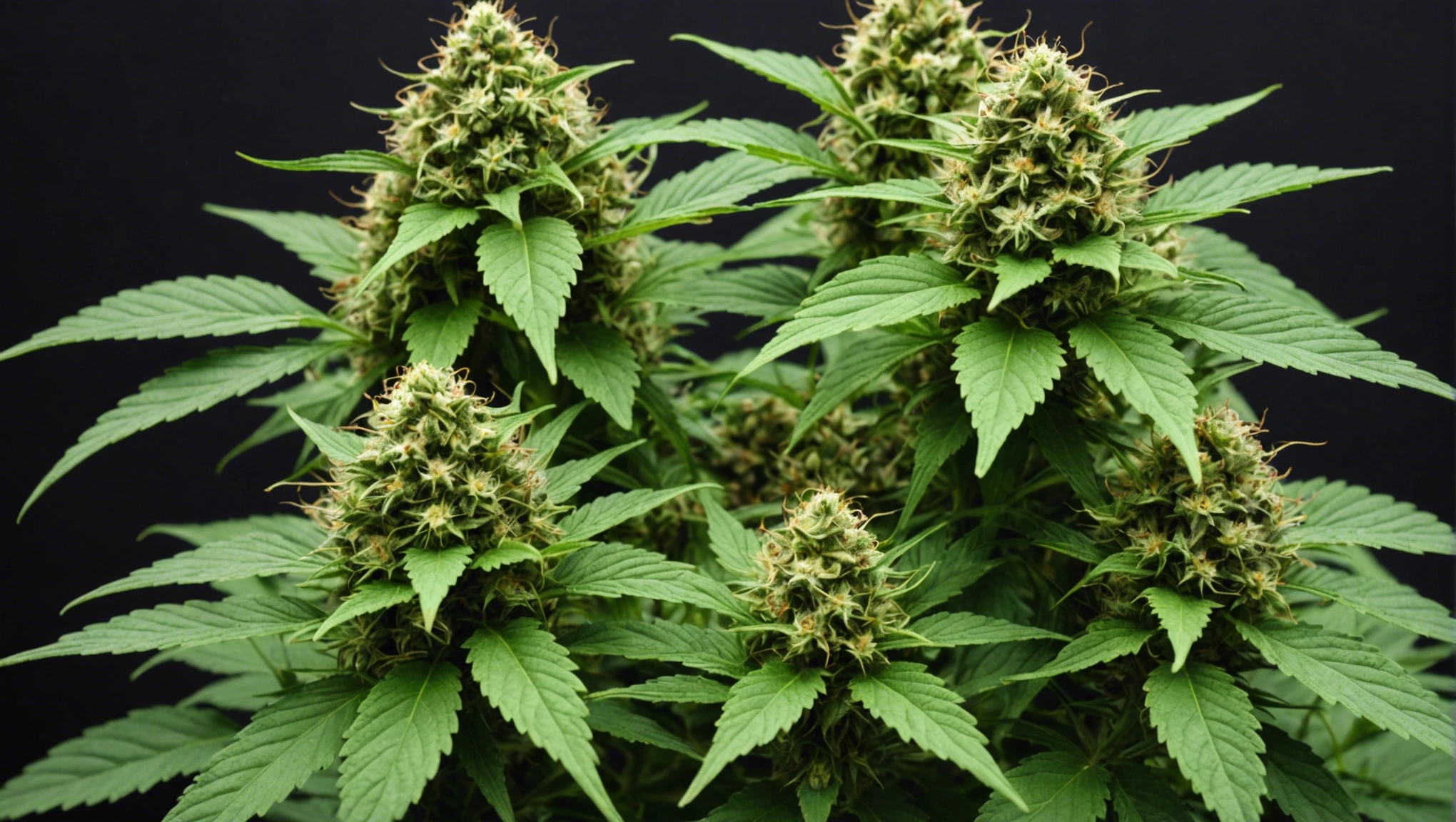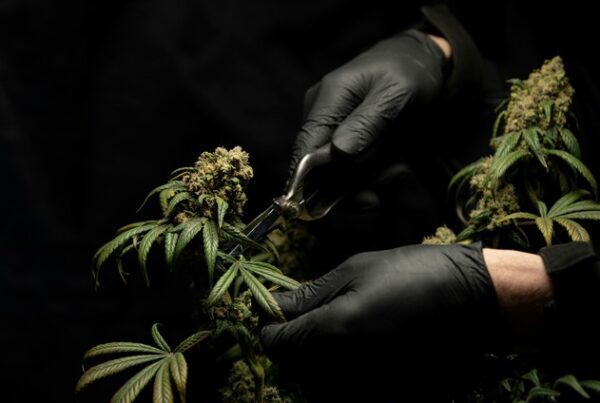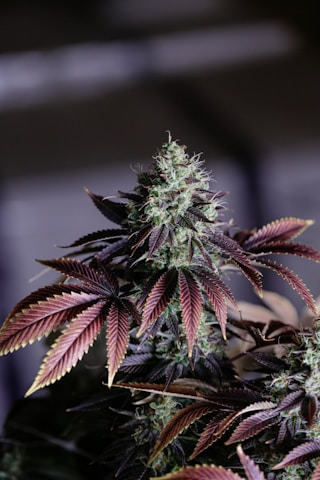Welcome to the world of cannabis cultivation! In this comprehensive guide, we will delve into the fascinating process of feminizing cannabis seeds. Whether you’re a seasoned grower looking to enhance your crop or a beginner eager to learn the ropes, feminization is a crucial technique that can significantly impact the quality and yield of your plants. By understanding the step-by-step process of feminizing cannabis seeds, you will gain valuable insights into how to ensure a bountiful harvest of potent, high-quality buds. From selecting the right seeds to mastering the art of pollination, this guide will equip you with the knowledge and skills needed to successfully feminize your cannabis plants. Get ready to embark on a rewarding journey of cultivation and discovery as we explore the intricacies of feminizing cannabis seeds together!

Methods of Seed Feminization
When it comes to seed feminization, there are several methods that breeders and growers can employ to ensure a higher percentage of female plants. Three common methods include:.
-
Breeding Female Plants Together: One method involves breeding two female plants together to produce seeds that are almost guaranteed to be female. This method is simple and effective, but it can limit genetic diversity.
-
Rodelization Technique: This technique involves stressing a female plant to produce male flowers. These male flowers can then be used to pollinate other female plants, resulting in feminized seeds. While this method can be effective, it may also result in hermaphroditic plants.
-
Silver Thiosulfate (STS) Method: The STS method involves treating female plants with a solution of silver thiosulfate to induce male flowers. These male flowers can then be used to pollinate other female plants, leading to the production of feminized seeds. This method is widely used in the industry and is known for its reliability.
Each of these methods has its own advantages and limitations, and breeders may choose the method that best suits their needs and preferences.
Expanding on the methods mentioned above, it’s essential to delve deeper into the intricacies of seed feminization. Breeding female plants together is a straightforward method that relies on the inherent genetic makeup of female plants to produce feminized seeds. However, this method may not always guarantee 100% feminization and can lead to a lack of genetic variation within the resulting plants.
The Rodelization Technique, while effective in inducing feminization, comes with the risk of producing hermaphroditic plants due to the stress placed on the female plant. Breeders utilizing this method must carefully monitor their plants to prevent unwanted traits from emerging.
On the other hand, the Silver Thiosulfate (STS) Method is a popular choice among breeders for its reliability in producing feminized seeds. By carefully applying the STS solution to female plants, breeders can control the feminization process more precisely, resulting in a higher success rate of obtaining female seeds.
The methods of seed feminization offer breeders a range of options to increase the yield of female plants in their crops. Each method comes with its own set of advantages and challenges, requiring breeders to weigh their priorities when selecting the most suitable technique for their cultivation goals.
Step-by-Step Guide to Feminize Cannabis Seeds
When it comes to growing cannabis, feminized seeds can be a game-changer. By feminizing seeds, you ensure that the plants will be female, which is essential for producing buds. Here is a step-by-step guide to feminize cannabis seeds:.
-
Using Colloidal Silver for Feminization: Colloidal silver is a substance that can be used to induce female pollen sacs on a female plant. By spraying colloidal silver on the plant during the flowering stage, you can force it to produce male flowers with female genetics. These male flowers can then be used to pollinate other female plants, resulting in feminized seeds.
-
Collecting Pollen for Seed Production: Once you have successfully induced male flowers on a female plant, you can collect the pollen using a small brush or by shaking the flowers over a clean surface. It’s important to collect the pollen carefully to avoid contamination.
-
Timing and Process of Pollen Collection: The timing of pollen collection is crucial for successful seed production. Collect the pollen when the male flowers have fully developed but have not yet released the pollen. Store the pollen in a cool, dry place until you are ready to pollinate the female plants.
Feminizing cannabis seeds can be a rewarding process for growers looking to ensure a bountiful harvest of high-quality buds. By following these steps carefully, you can successfully feminize cannabis seeds and take your growing operation to the next level.
Expanding on the process of feminizing cannabis seeds, it’s important to note that the use of colloidal silver is a safe and effective method for inducing male flowers on a female plant. The application of colloidal silver should be done with caution, following recommended guidelines to avoid any adverse effects on the plant’s health.
Moreover, when collecting pollen for seed production, ensure that the tools used are clean and sterile to prevent any contamination that could affect the quality of the seeds. Proper storage of pollen in a cool, dry environment is essential to maintain its viability until it is used for pollination.
Timing is key in the process of pollen collection. Waiting for the male flowers to fully develop but not release pollen ensures that the pollen is mature and ready for successful pollination. This attention to detail can significantly impact the outcome of seed production.
Mastering the art of feminizing cannabis seeds requires patience, precision, and a good understanding of the plant’s reproductive biology. By following the step-by-step guide and incorporating additional tips for success, you can elevate your cannabis cultivation skills and enjoy the benefits of producing your own feminized seeds for a thriving garden.
Benefits of Using Feminized Seeds in Cannabis Cultivation
When it comes to cultivating cannabis, using feminized seeds offers a range of benefits that can significantly impact the outcome of your harvest. One key advantage of using feminized seeds is the consistency and reliability they provide in crop yield. With feminized seeds, you can expect that nearly all of your plants will be female, which is essential for producing the desired flower buds. This eliminates the need to identify and remove male plants, saving time and resources.
Additionally, feminized seeds contribute to increased efficiency and quality of harvests. By ensuring that all your plants are female, you can focus your resources on maximizing the growth and health of your crop, leading to a more bountiful and potent harvest. Moreover, feminized seeds are genetically modified to carry only female chromosomes, ensuring that the plants will produce flowers with high THC content, which is desirable for many growers. This genetic modification also reduces the risk of accidental pollination, which can result in lower-quality buds.
Another benefit of using feminized seeds is the convenience they offer. With feminized seeds, growers can skip the labor-intensive process of identifying and removing male plants, allowing them to allocate their time and effort more efficiently. Furthermore, feminized seeds are often more resilient to stress factors, such as pests and diseases, due to their stable genetics. This increased resilience can lead to a higher overall yield and better quality crops.
In addition to these benefits, feminized seeds can also save growers money in the long run. By eliminating the need to purchase regular seeds in bulk and then discard the male plants, growers can reduce their overall seed costs and maximize their return on investment. Overall, the use of feminized seeds can streamline the cultivation process, improve the quality of the harvest, and ultimately lead to more successful and predictable results in cannabis cultivation.
Beyond these advantages, feminized seeds also offer environmental benefits. With the elimination of male plants, there is a reduction in pollen production, which can help prevent unwanted pollination of nearby crops or wild cannabis plants, maintaining genetic purity. This can be particularly important for growers in regions where cannabis cultivation is tightly regulated to prevent cross-breeding with wild strains. Additionally, the reduced need for pesticides and herbicides due to the plants’ increased resilience can contribute to a more sustainable and eco-friendly cultivation practice.
The use of feminized seeds aligns with the trend towards sustainable agriculture and responsible farming practices, making it a preferred choice for environmentally conscious growers. Furthermore, the uniformity in plant characteristics achieved through feminized seeds allows for better crop management and planning. Growers can anticipate more consistent growth patterns, flowering times, and cannabinoid profiles, enabling them to optimize their cultivation techniques and resources effectively. This predictability is especially valuable for commercial cannabis operations where standardization and quality control are paramount.
The benefits of using feminized seeds extend beyond crop yield and quality to encompass environmental sustainability, operational efficiency, and genetic purity, making them a valuable asset for modern cannabis cultivation practices.
Challenges and Considerations in Seed Feminization
Seed feminization, a process aimed at producing seeds that will develop into female plants, comes with its own set of challenges and considerations. In this section, we will delve into the risks associated with hermaphrodite genetics and the ethical and environmental concerns surrounding seed feminization.
Risk of Hermaphrodite Genetics:
- One of the primary challenges in seed feminization is the risk of hermaphrodite genetics. Hermaphroditism, the development of both male and female reproductive organs in a single plant, can lead to a decrease in the quality and yield of the crop. Controlling and minimizing the occurrence of hermaphrodite genetics is crucial in seed feminization to ensure the production of high-quality seeds.
Ethical and Environmental Concerns:
- Seed feminization raises ethical and environmental concerns, particularly regarding the use of chemicals and genetic modification. The reliance on chemicals for feminization can have adverse effects on the environment, such as soil contamination and water pollution. Additionally, the genetic modification involved in seed feminization may raise ethical questions about the manipulation of plant genetics and biodiversity.
Impact on Biodiversity:
- Another consideration in seed feminization is its potential impact on biodiversity. By focusing on producing female plants, there is a risk of reducing genetic diversity within plant populations. This reduction in genetic variability can make crops more susceptible to diseases and environmental changes, ultimately affecting long-term sustainability.
Regulatory Challenges:
- Seed feminization also faces regulatory challenges in various regions. Different countries have differing regulations on the use of chemicals, genetic modification, and seed production practices. Compliance with these regulations while ensuring efficient seed feminization processes can be a complex task for seed producers.
Research and Development:
- Continued research and development in seed feminization techniques are essential to address the challenges and improve the sustainability of seed production. Innovations in breeding methods, such as marker-assisted selection and non-GMO approaches, can help mitigate some of the concerns associated with traditional seed feminization methods.
While seed feminization offers benefits in terms of crop production and efficiency, it is essential to address the challenges and considerations, such as the risk of hermaphrodite genetics, ethical and environmental implications, impact on biodiversity, regulatory challenges, and the need for ongoing research and development, to ensure sustainable and responsible practices in seed production.
Conclusion
Feminizing cannabis seeds is a crucial step for many growers seeking a higher yield and efficiency in their cultivation process. The benefits of using feminized seeds, such as increased consistency and time-saving advantages, make them a popular choice among cannabis enthusiasts. Understanding the differences between feminized, regular, and autoflowering seeds is essential for selecting the right option based on individual preferences and growing conditions.
For a detailed guide on finding your perfect feminized cannabis seeds, including top strains and cultivation tips, visit. Original Johnny Seed Bank’s webpage . Empower your cannabis growing journey with the right knowledge and resources to achieve successful results. Happy growing!.










